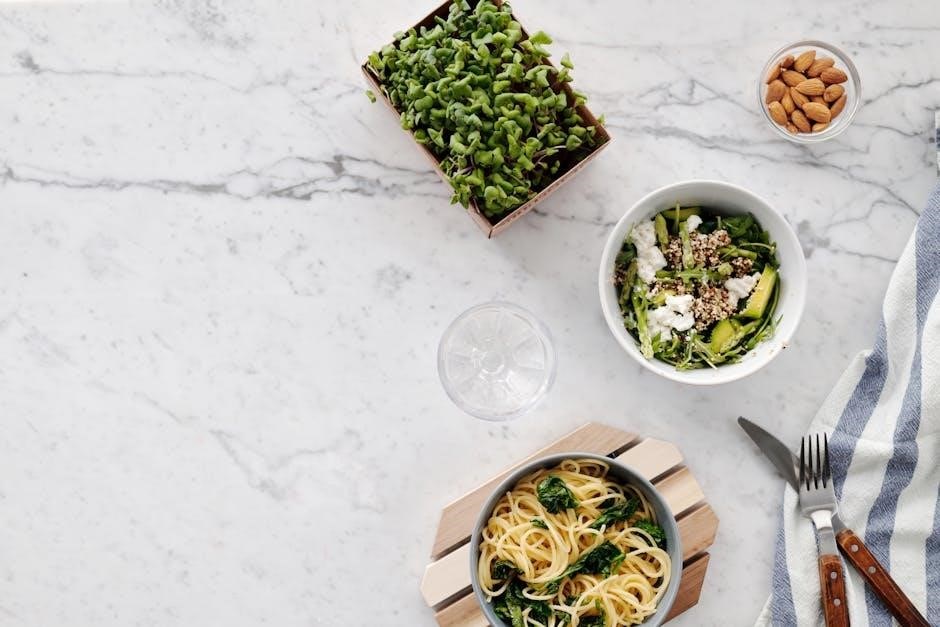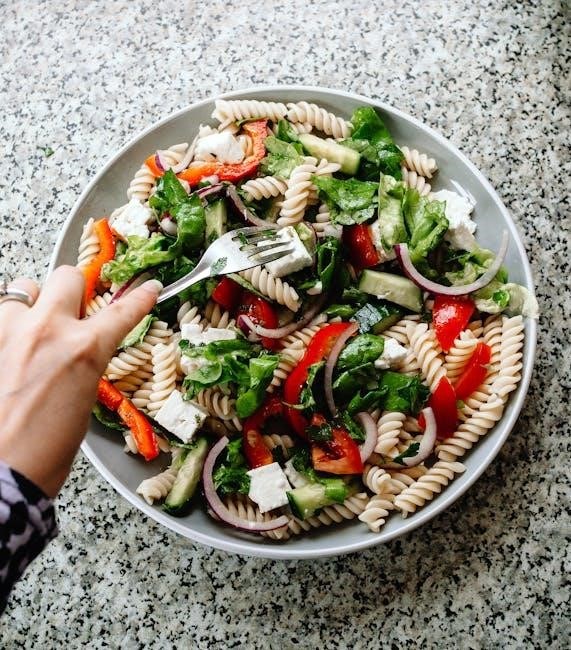LEGO MOC instructions offer customizable building guides created by fans, providing step-by-step directions for unique models. These free PDF guides inspire creativity and accessibility for LEGO enthusiasts worldwide.
What Are LEGO MOCs?
LEGO MOCs (My Own Creations) are custom LEGO models designed by fans worldwide. These unique builds showcase creativity beyond official sets, often featuring intricate designs and themes. MOCs can range from small, simple ideas to massive, complex projects. Many creators share their designs as free PDF instructions, allowing others to replicate their work. Platforms like Rebrickable and MOCs MARKET host these designs, offering a diverse library of builds, from Technic mechanisms to pop culture icons. This community-driven initiative fosters innovation and provides endless inspiration for LEGO enthusiasts of all skill levels. MOCs embody the spirit of LEGO creativity and collaboration.
Why Free PDF Instructions Are Popular
Free PDF instructions for LEGO MOCs are highly sought after due to their accessibility and affordability. They allow builders to explore unique, fan-created designs without financial barriers. These guides are easily downloadable and printable, making them convenient for LEGO enthusiasts worldwide. Additionally, free instructions foster a sense of community, encouraging collaboration and creativity among builders. Many creators share their designs to gain recognition and inspire others, while fans appreciate the ability to bring custom models to life. This sharing culture has become a cornerstone of the LEGO fan community, driving innovation and engagement.

Where to Find Free LEGO MOC Instructions
Discover free LEGO MOC instructions on platforms like Rebrickable, MOCs MARKET, and BrickLink. These sites offer extensive libraries of PDF guides for custom LEGO designs, enabling builders to explore unique models effortlessly.
Rebrickable: A Comprehensive Database
Rebrickable is a vast online library offering free LEGO MOC instructions and parts lists. This platform allows users to search and download PDF guides for thousands of custom models. It supports various file formats and provides tools for managing your LEGO collection. Rebrickable also features a 3D viewer to visualize builds before starting. With a focus on community sharing, it has become a trusted resource for builders, offering both vintage and modern designs. Established in 2012, Rebrickable remains a go-to destination for LEGO enthusiasts seeking high-quality, free instructions.
MOCs MARKET: A Hub for Custom LEGO Designs
MOCs MARKET is the ultimate platform for LEGO enthusiasts, offering a wide range of custom LEGO designs. This multi-vendor platform showcases creations from top LEGO designers worldwide. Users can download free PDF instructions for various models, including LEGO Technic mechanisms and modular buildings. Additionally, MOCs MARKET provides custom kits with pieces and instructions, allowing builders to bring their favorite designs to life. Its extensive library and user-friendly interface make it a must-visit destination for anyone seeking unique and creative LEGO builds.
BrickLink and Other Fan-Created Platforms

BrickLink is a central hub for LEGO enthusiasts, offering a vast marketplace for custom LEGO creations. Fans can share and download free PDF instructions for unique MOCs, ranging from Technic mechanisms to modular buildings. The platform also features detailed parts lists and user-generated content, making it a go-to resource for builders. Beyond BrickLink, other fan-created platforms provide similar opportunities, fostering a sense of community and creativity. These sites empower builders to explore new ideas and bring their visions to life with ease and accessibility.
HostasBuilds and Jerrybuildsbricks: High-Quality MOCs
HostasBuilds and Jerrybuildsbricks are prominent creators of high-quality LEGO MOCs, offering free PDF instructions for their designs. HostasBuilds provides detailed guides for unique models, including parts lists, making it accessible for builders of all skill levels. Jerrybuildsbricks specializes in intricate vehicles, such as supercars and batmobiles, with step-by-step instructions. Both platforms emphasize creativity and precision, allowing fans to bring their favorite designs to life. These resources are invaluable for LEGO enthusiasts seeking inspiration and challenging builds to expand their creative horizons.

Types of LEGO MOCs with Free Instructions
LEGO MOCs vary widely, from Technic models with complex mechanisms to modular buildings and pop culture icons. Each type offers unique challenges and creative possibilities for builders.
LEGO Technic MOCs: Complex Mechanisms
LEGO Technic MOCs showcase intricate mechanical designs, often featuring gears, motors, and moving parts. These models highlight advanced engineering principles, making them ideal for experienced builders. A standout example is the LEGO Great Ball Contraption, which demonstrates a cardan gear lifting mechanism. Such creations emphasize functionality and precision, appealing to those who enjoy problem-solving and mechanical systems. With free PDF instructions available, enthusiasts can explore these complex builds, learning new techniques and expanding their LEGO toolkit. These MOCs blend creativity with technical expertise, offering a rewarding challenge for LEGO fans of all skill levels.

LEGO Modular Buildings: Detailed Cityscapes
LEGO Modular Buildings are renowned for their intricate designs and detailed cityscapes, allowing builders to create vibrant urban environments. These models often feature multi-level structures, realistic facades, and functional interiors. A popular example is the Mini Medieval Town Square, which captures the charm of historic architecture with its intricate details. Builders can explore these designs using free PDF instructions, making it easier to bring their cityscapes to life. Modular builds encourage creativity and storytelling, offering a unique way to construct and connect diverse structures into a cohesive LEGO world.
LEGO Pop Culture MOCs: Iconic Characters and Vehicles
LEGO Pop Culture MOCs bring iconic characters and vehicles to life, capturing the essence of movies, TV shows, and video games. A standout example is the Greninja LEGO MOC, inspired by Pokémon, which showcases intricate details like water propulsion. Builders can access free PDF instructions for these designs, enabling them to recreate their favorite pop culture icons. Platforms like Rebrickable and MOCs MARKET offer a wide range of these models, from superhero vehicles to beloved anime characters. These MOCs allow fans to combine their passion for LEGO with their love for pop culture, creating unique and imaginative builds.

How to Download and Use LEGO MOC Instructions
Find and download free LEGO MOC PDFs from platforms like Rebrickable or MOCs MARKET. Follow the step-by-step guides, check the parts list, and start building your custom creations easily.
Step-by-Step Guide to Downloading PDFs
To download LEGO MOC instructions, visit platforms like Rebrickable or MOCs MARKET. Search for your desired MOC, then locate the PDF download link. Ensure you have a PDF reader installed. After downloading, review the parts list to confirm you have all necessary LEGO pieces. Organize your bricks, then follow the step-by-step guide. Many instructions include 3D models or inventory lists for clarity. Print the PDF if preferred, and start building your custom creation. Some platforms also offer additional tools, like 3D viewers, to enhance your building experience. Always verify the instructions are compatible with your LEGO collection before starting.
Understanding Parts Lists and Inventory
Parts lists are essential for managing your LEGO collection and ensuring you have all components needed for a MOC. These detailed inventories list every LEGO piece required, including quantities and colors. Before starting a build, review the parts list to verify availability in your collection. If missing pieces, consider sourcing them from platforms like BrickLink or Rebrickable. Some MOCs include 3D models or viewers for better visualization. Organize your bricks by category or color to streamline assembly. Always cross-check your inventory with the parts list to avoid mid-build interruptions and ensure a smooth, enjoyable experience.
Using BrickLink Studio for Custom Builds
BrickLink Studio is a powerful tool for designing and rendering custom LEGO models. It allows builders to create digital versions of their MOCs, generate detailed instructions, and share designs with the community. The software supports 3D visualization, making it easier to plan and refine builds. Many free PDF instructions available online are created using BrickLink Studio, as it streamlines the process of producing step-by-step guides. Builders can also export parts lists and inventory checks directly from the platform. Whether you’re a seasoned creator or a new builder, BrickLink Studio enhances the LEGO MOC experience, fostering creativity and collaboration within the LEGO community.

Popular Free LEGO MOCs to Try
Greninja, Mini Medieval Town Square, and LEGO Great Ball Contraption are standout free MOCs with detailed PDF instructions, offering unique builds that inspire creativity and fun for LEGO enthusiasts.
Greninja LEGO MOC: A Pokémon-Inspired Build
Greninja LEGO MOC, created by Pino Creations, is a stunning Pokémon-inspired build that captures the Water/Dark-type ninja Pokémon’s sleek design. The model features intricate details, such as water propulsion elements, showcasing Greninja’s dynamic pose. Builders can download free PDF instructions, complete with a parts list, to bring this ninja Pokémon to life. The MOC’s design emphasizes authenticity and creativity, making it a must-try for Pokémon and LEGO fans alike. Its detailed construction and posable features allow for a vibrant display piece that combines LEGO bricks with Pokémon nostalgia.
Mini Medieval Town Square: A Community Favorite
Mini Medieval Town Square, crafted by LEGO builder christromans, is a charming MOC that captures the essence of a quaint medieval village. This popular design features intricate details like a central fountain, cobblestone streets, and a blacksmith shop. Its modular design allows it to seamlessly integrate into larger LEGO city layouts. The MOC’s timeless appeal lies in its ability to transport builders to a bygone era, blending functionality with aesthetic charm. With free PDF instructions available, fans of historical LEGO builds can easily recreate this beloved model, making it a staple in many LEGO collections worldwide.
LEGO Great Ball Contraption: A Fun Mechanism
LEGO Great Ball Contraption (GBC) is a popular MOC that showcases an intricate mechanical system designed to transport balls through a series of lifts, ramps, and chutes. This module, featuring a cardan gear lifting mechanism and a stepped input tray, is both entertaining and educational. The free PDF instructions, available online, provide a detailed 125-page guide for builders to recreate this marvel. Perfect for LEGO Technic enthusiasts, the GBC module combines creativity with engineering, making it a beloved project for fans of mechanical builds. Its interactive nature and complexity make it a standout in the LEGO MOC community.
The world of free LEGO MOC instructions offers endless creativity, accessibility, and inspiration for builders of all levels. Start building today!
The Future of Free LEGO MOC Instructions
The future of free LEGO MOC instructions looks promising, with growing communities and platforms like Rebrickable expanding access to custom designs. Innovations in digital tools, such as BrickLink Studio, are making it easier for creators to design and share PDF guides. As more fans contribute their unique builds, the diversity of available models will continue to grow. This trend fosters creativity and inclusivity, ensuring that LEGO enthusiasts of all skill levels can enjoy building custom creations without cost barriers. The rise of high-quality, free MOC instructions promises to inspire even more imaginative builds in the years to come.
Encouraging Creativity in the LEGO Community
Free LEGO MOC instructions empower builders to explore new ideas and techniques, fostering creativity and innovation. These resources democratize access to custom designs, allowing fans of all skill levels to experiment and learn. By sharing PDF guides, creators inspire others to push boundaries, try unique mechanisms, and build intricate models. This collaborative spirit strengthens the LEGO community, turning imagination into reality and encouraging builders to contribute their own designs. The availability of free MOC instructions ensures that creativity remains accessible and thriving, uniting LEGO enthusiasts worldwide in a shared passion for building and innovation.





























